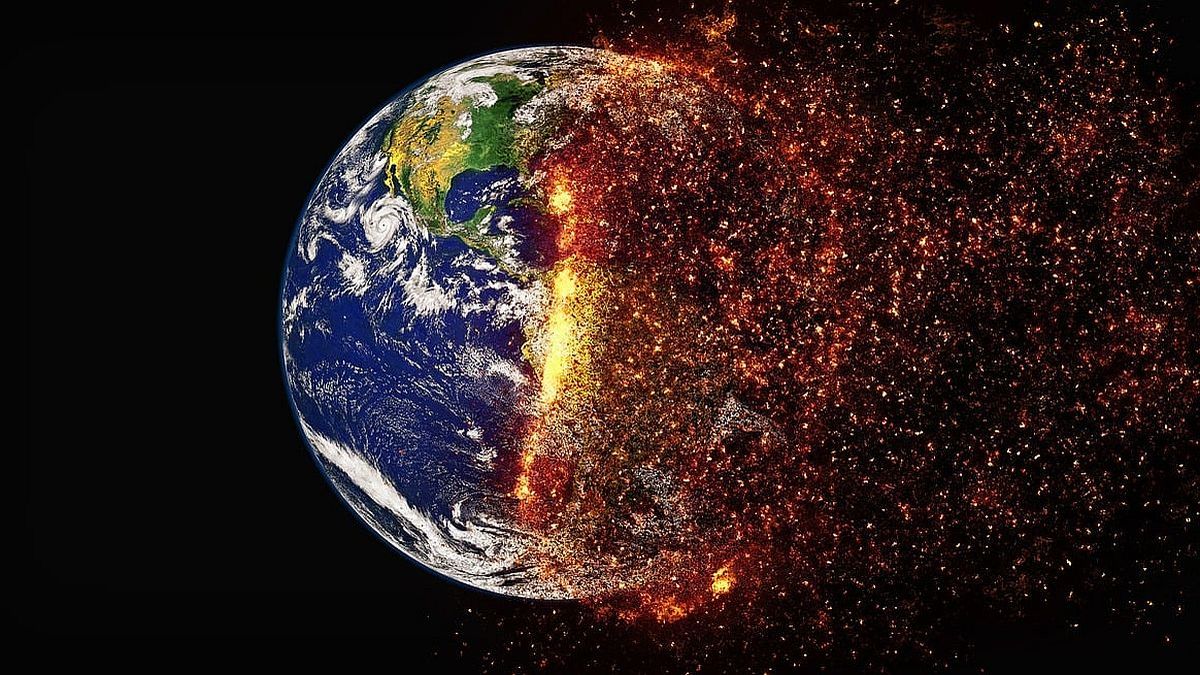Since the 1970s, the United Nations has been warning about the environmental problemsTherefore, over the last 50 years, numerous conferences and summits have been held, protocols defined and different agreements signed. However, When we dedicate ourselves to seeing the environmental state and nature we realize that the trend of the environmental situation has not changed.
It seems trite, but it is real and worrying: we are using our planet’s resources at an increasing rate while we are generating waste and pollution at a faster rate than our ecosystem services can absorb. I mean, We are destroying the environment.
Despite some specific advances such as the recovery of the ozone layer thanks to the Montreal protocol or the growth of sustainable energy production, the overall situation is extremely worrying.
The trends of rising sea level, higher temperatures in the oceans, the constant decrease in the ice sheets of Antarctica and Greenland and fundamentally the increasing concentration of carbon dioxide in the atmosphere above 350 parts per million are alarming for several years and still have not changed their address.
In recent years, we have evolved the concepts we use to describe humanity’s various goals. Previously we used concepts like Sustainability and Sustainable Development, while now due to environmental deterioration We are talking about how we have to work on environmental regeneration..
Likewise, before we described the problem as climate change and we are gradually hearing the concept of climate crisis. And as long as the trend of environmental damage does not change, we will probably be hearing the concept of climate collapse.
Currently, and after almost 10 years, only 17% of the goals of the 2030 agenda are on track. Furthermore, the amounts allocated for sustainable climate change finance are nowhere near sufficient. To dimension, the main estimates affirm that to stop climate change We need to allocate 25 times the amount allocated globally to confront COVID-19. Even, dear reader, let us keep in mind that the later we make the transition, the more funds will be needed because the environmental situation worsens day after day.
“There is no time to waste”. That is the phrase that scientists have been communicating for a long time, exclaimed by the inhabitants of countries that are disappearing due to the rise of the sea (Maldive Islands, French Polynesia, Papua New Guinea among others), and even exclaimed by the number one institutions and organizations world, including Pope Francis, Kristalina Georgieva and António Guterres.
In this framework, there are a couple of scenarios that emerge.
What are the possibilities to address environmental problems?
The most worrying option of all is reset global systemthat is, to stop global activity through a world war threein this case a nuclear war. Precisely, these days we are observing Russia’s military escalation and its threats to Europe and the entire world due to the conflict with Ukraine. If this happens and depending on the results, we could be facing a new world order, with its corresponding political, economic and especially monetary impacts.
Another option is voluntarily change multiple systemsespecially the production and consumption system, which are those that directly influence the current concern. However, for this to happen there is a lack of sufficient monetary and financial incentives. However, I wonder how it can be that there is not enough money to accelerate the environmental transition if money is a symbolic social contract and therefore has no restrictions on its creation, but look at what happens with the continuous issuance of money and the issuance of debt from countries like the United States?
Finally, a more effective option could be attack the root cause (and invisible) that drives behaviors that do not take into account environmental damage. This option would be to implement a system that allows align the interests of producers and consumers in pursuit of a better environment.
Therefore, dear reader, I ask: What would happen if the system that facilitates exchange could at the same time raise awareness and encourage both parties to change their behaviors, that is, the supply of goods has better production practices and consumers reduce the overconsumption?
What would happen if humanity, instead of having a monetary system that promotes the accumulation of wealth to the detriment of the environment, used A monetary system that promotes environmental care, pursues intergenerational justice by encouraging less consumption of current resources, and improves intragenerational equity by encouraging the entire current generation to reduce their superfluous overconsumption?
This option could be a great way to maintain life on planet Earth, however, there is a subtle detail to take into account What would happen if the monetary system with these characteristics was designed by an authoritarian government like China? On the other hand, what would happen if this monetary system is public, transparent, uncensorable and maintained in a decentralized manner?
Doctor in Economic Sciences (UNLaM). Professor of the Doctorate of Circular Economy and Sustainable Production (UFLO – UCEL – UCP). Academic Subcoordinator of the Diploma in Blockchain, Bitcoin and Cryptocurrencies (FCE-UBA). Consultant at NGO Bitcoin Argentina.
Source: Ambito
I am a 24-year-old writer and journalist who has been working in the news industry for the past two years. I write primarily about market news, so if you’re looking for insights into what’s going on in the stock market or economic indicators, you’ve come to the right place. I also dabble in writing articles on lifestyle trends and pop culture news.




